Progressive Web Apps
PWA helps TOP 5 World leading News and Business media to win the audience
Hands that once hold newspapers now carry mobile devices.
But the migration of consumers didn't kill news publishing as one would have imagined. To catch readers the industry has evolved from print to pixels and to even more advanced technologies like PWA.
But the migration of consumers didn't kill news publishing as one would have imagined. To catch readers the industry has evolved from print to pixels and to even more advanced technologies like PWA.
“
Who owns the information owns the world
Information drives the world. The target of every media is still to get the newest first
and deliver that to their readers as soon as possible. When the choice of news sources is huge, a media has to provide a better, faster and more engaging experience for
its audience.
And it looks like the PWA technology is exactly what any media outlet would need to have now — it eases up reader’s access to the newest articles and allows them to share the hottest of them seamlessly between different touchpoints.
Here are some PWA success stories from the publishing industry.
and deliver that to their readers as soon as possible. When the choice of news sources is huge, a media has to provide a better, faster and more engaging experience for
its audience.
And it looks like the PWA technology is exactly what any media outlet would need to have now — it eases up reader’s access to the newest articles and allows them to share the hottest of them seamlessly between different touchpoints.
Here are some PWA success stories from the publishing industry.
1. The Washington Post
A major and one of the oldest American daily newspaper is one of the early adopters launching PWA technology in 2016 to create a better user experience for its fastest-growing audience. Already then, they’ve seen about 5X engagement — page views per visit, number of stories read and 88% improvement in load time over the traditional mobile web.
“
In our public-facing beta of the PWA web app, we’ve seen about 5x engagement — page views per visit, number of stories read.
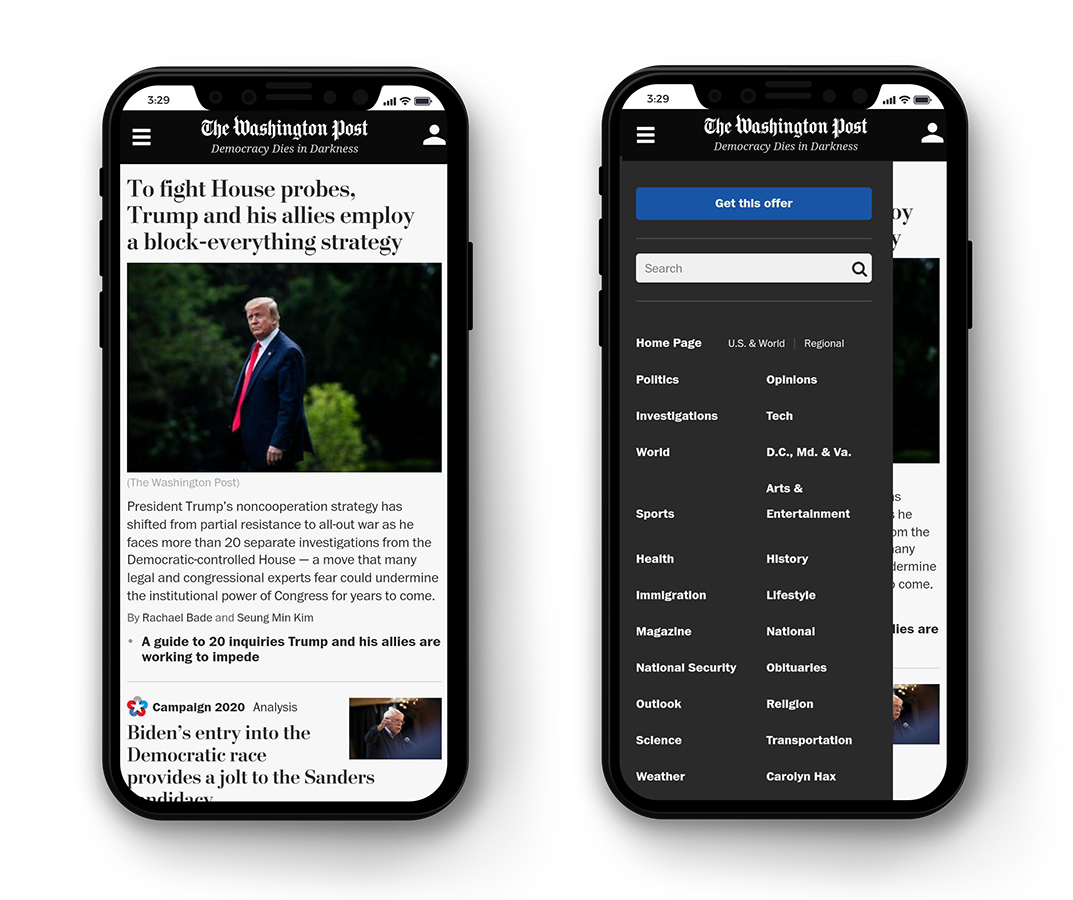
2. Forbes
Forbes is an American business magazine. Published bi-weekly, it features original articles on finance, industry, investing, and marketing topics. Forbes also reports on related subjects
such as technology, communications, science, politics, and law. The magazine is well known
for its lists and rankings, including of the richest Americans (the Forbes 400), of the world's
top companies (the Forbes Global 2000), and The World's Billionaires. Following The Washington Post Forbes launched it's PWA in 2017.
Performance gains and business impact:
such as technology, communications, science, politics, and law. The magazine is well known
for its lists and rankings, including of the richest Americans (the Forbes 400), of the world's
top companies (the Forbes Global 2000), and The World's Billionaires. Following The Washington Post Forbes launched it's PWA in 2017.
Performance gains and business impact:
- faster load times — new site loads in an average of 0.8 seconds
- the app increased user engagement by 100%
- 43% increase in sessions per user
- 3X increase in scroll depth
- ad views up 20%
- highly visual content
- push notifications for Android devices
- the story format called cards where the users can swipe through any kind of content
- Forbes cut down the average size of its webpages from 2MB to 30KB
“
We've completely overhauled our approach to product innovation so that we can better respond to the way our readers
are consuming content and address the rapid changes in the marketplace.
are consuming content and address the rapid changes in the marketplace.
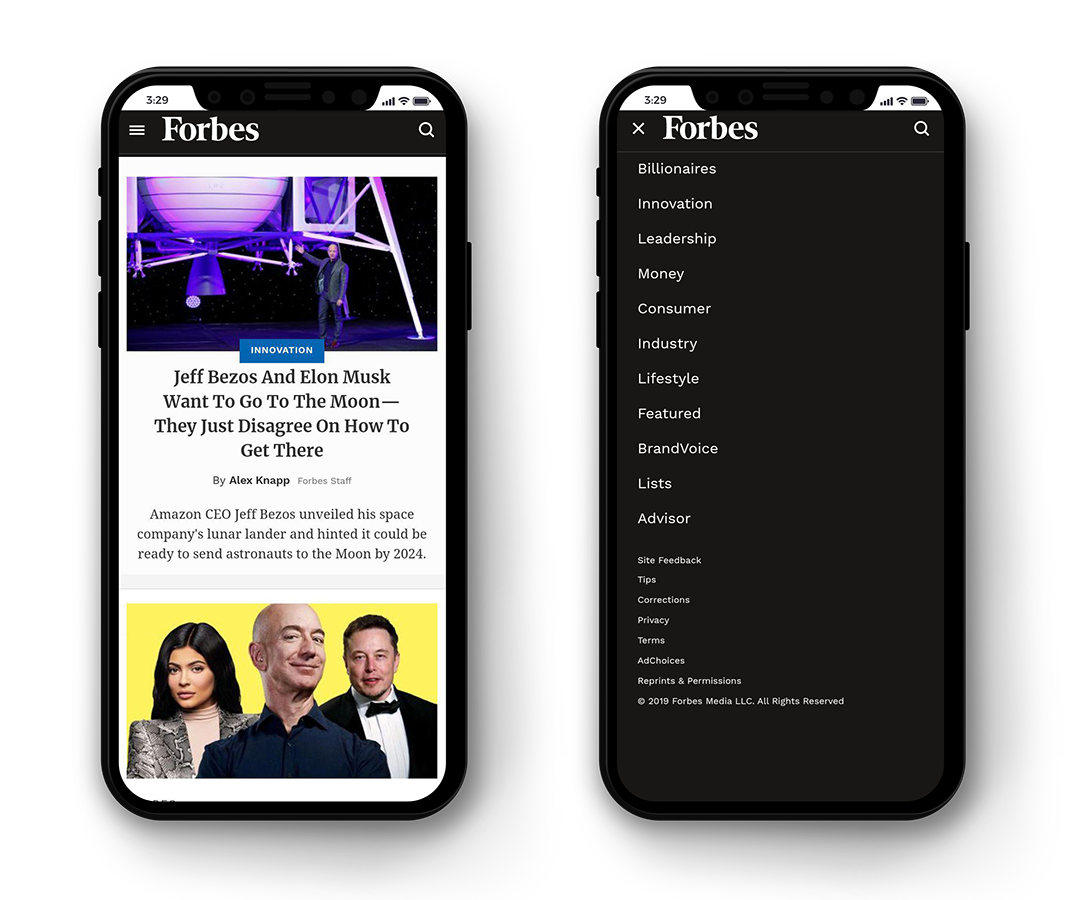
3. Nikkei
With a publishing history of more than 140 years, Nikkei is one of the most authoritative media businesses in Japan. Along with their print newspaper, they have over 450 million monthly visits to their digital properties. To provide a better user experience and accelerate their business on the web, Nikkei successfully launched a PWA in November 2017.
They’re now seeing amazing results from the new platform:
- 2X better Speed Index
- 14 seconds faster time-to-interactive
- 75% faster loading with prefetch
- 2.3X organic traffic
- 58% more conversions (subscriptions)
- 49% more daily active users
- 2X page views per session
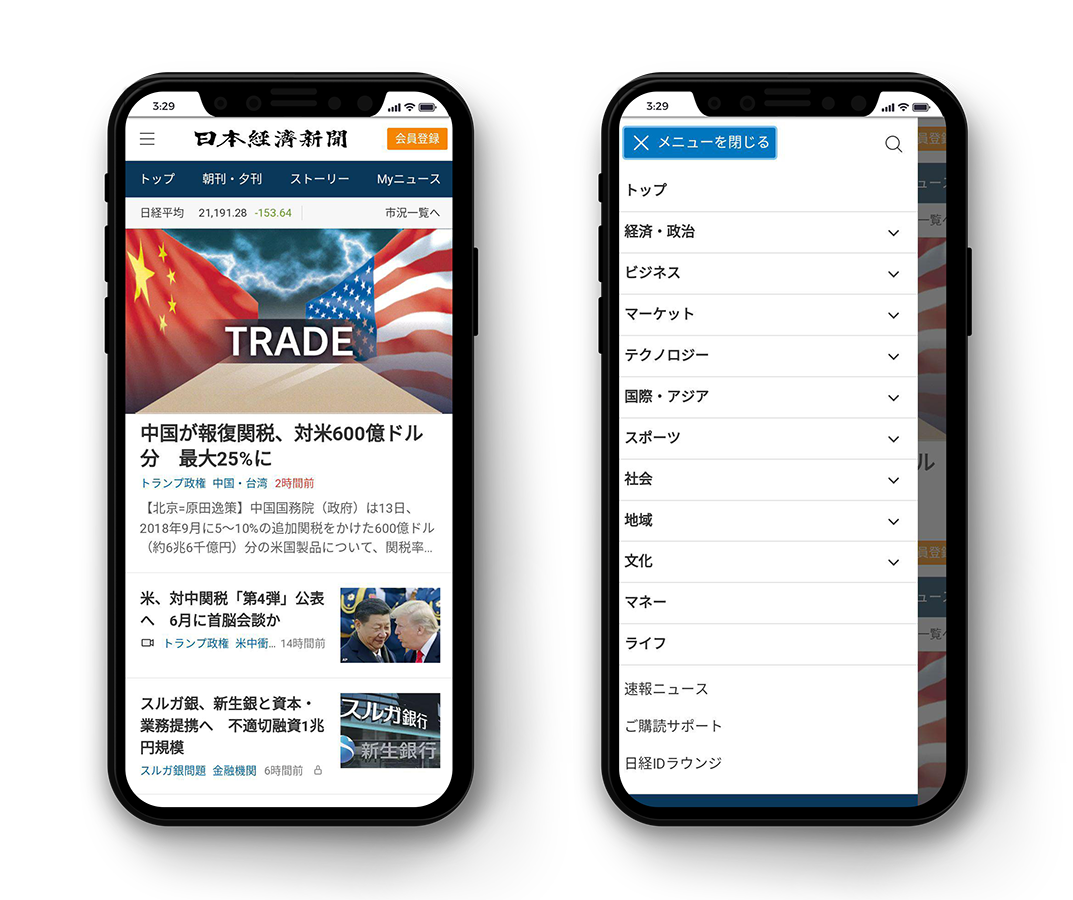
4. Financial Times
Founded in 1888 The Financial Times is an English-language international daily newspaper headquartered in London, with a special emphasis on business and economic news.
The Financial Times has a record paying readership of one million, three-quarters of which are digital subscriptions (as of April 2019).
In 2017 The Financial Times abandoned their native apps in favor of a robust PWA to allow readers to consume articles offline and on the go. PWA allows for faster loading and toggling of articles as they are initially loaded and stored locally — even in offline mode.
The Financial Times has a record paying readership of one million, three-quarters of which are digital subscriptions (as of April 2019).
In 2017 The Financial Times abandoned their native apps in favor of a robust PWA to allow readers to consume articles offline and on the go. PWA allows for faster loading and toggling of articles as they are initially loaded and stored locally — even in offline mode.
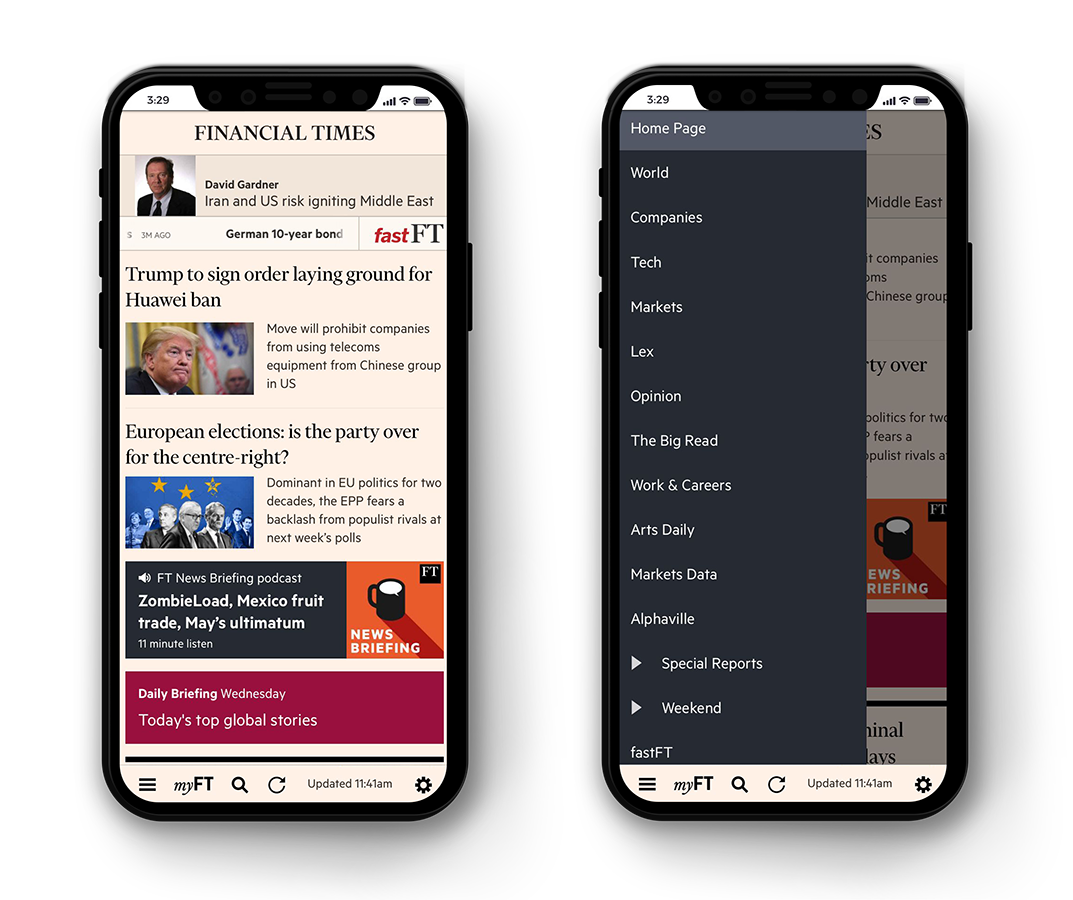
5. The Guardian
The Guardian is a British daily newspaper which was known from 1821 until 1959 as The Manchester Guardian. Being nominated as the UK most trusted on-line news brand of 2018, The Guardian keeps growing its digital audience both with the high-quality content and one of the
high-performing PWA among publishers.
high-performing PWA among publishers.
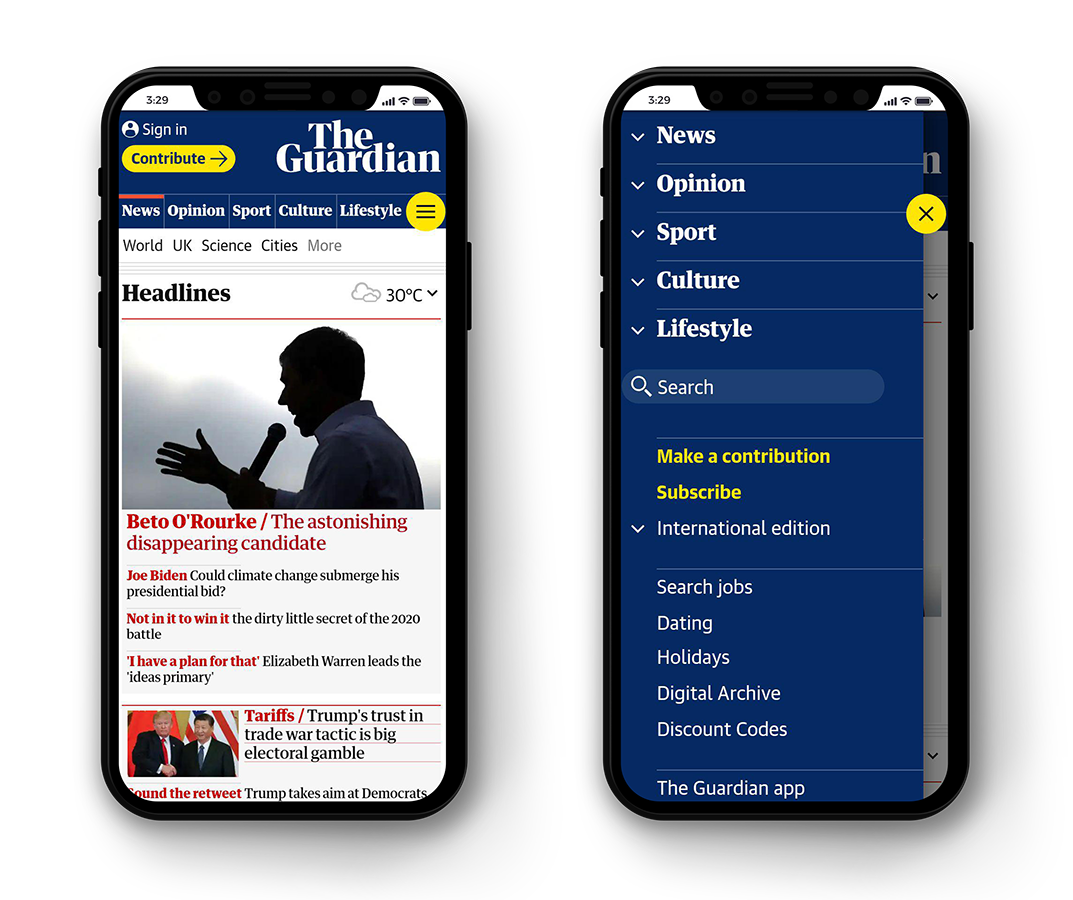
And the list will go on...
Progressive Web App technology is being applied across various industries providing lots of advantages for both owners and consumers. As the examples shows, the media industry benefits from PWA increasing speed, improving in re-engagement, and raising conversions. And readers come back for more because they are able to interact with the favorite media source in a more positive way. No doubt we will see more and more great cases here.
Media industry was one of the first to embrace Progressive Web Apps as a new way to user mobility. Even though many of them have no implemented PWA to it’s full power yet, according to our research of these and other resources, reasons for early adoption are pretty clear — their revenue is driven by user engagement and return. Oh, hold it. Isn’t all businesses are driven by the same metrics? Well, not all but most. The wave is coming.

Alex Burlitsky
Chief Editor, CEO, Founder

